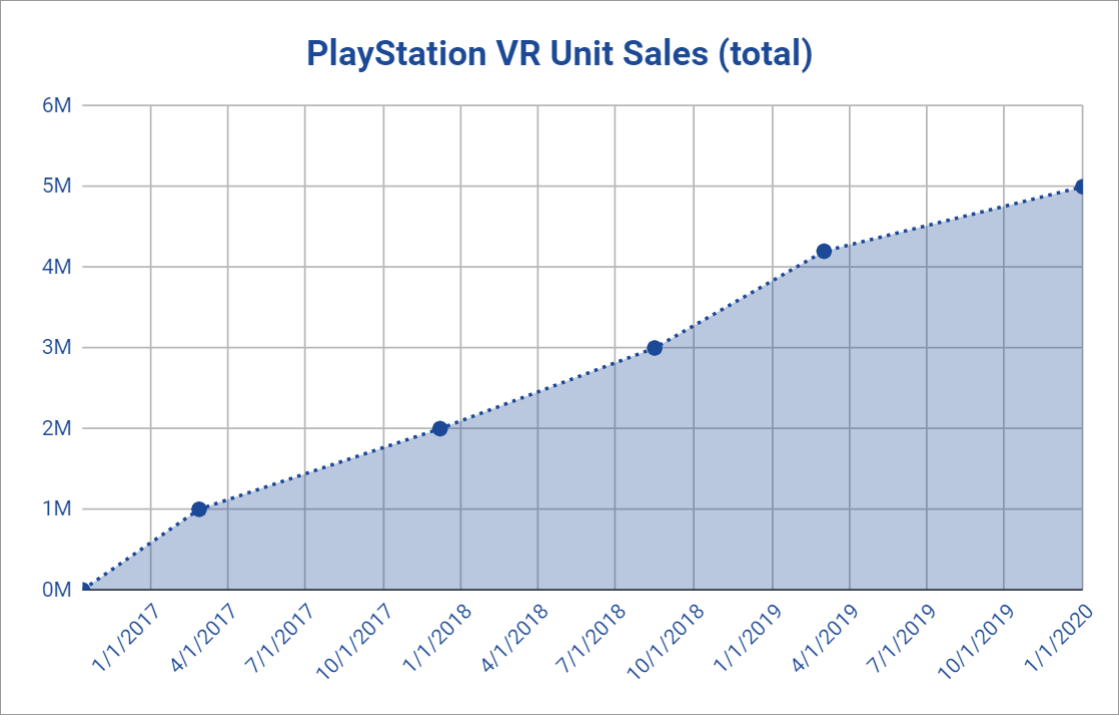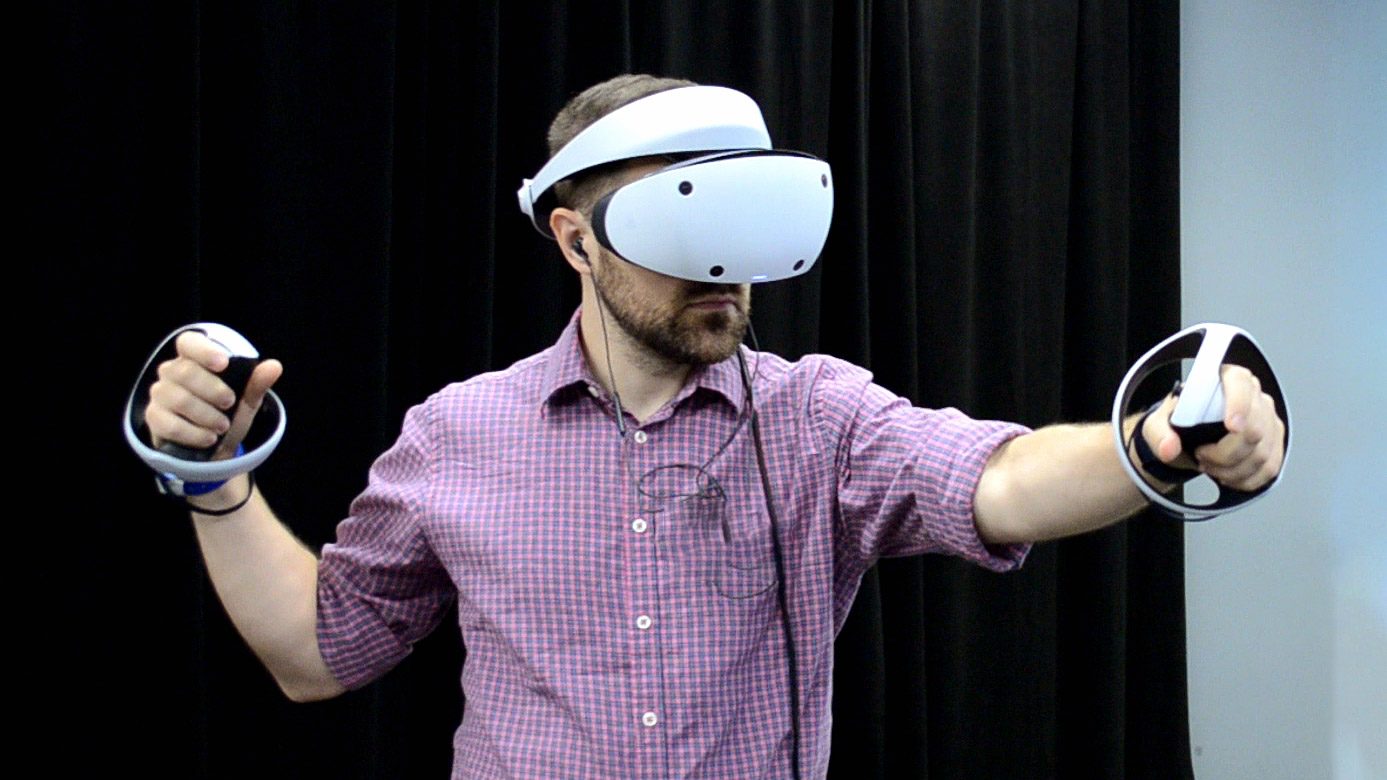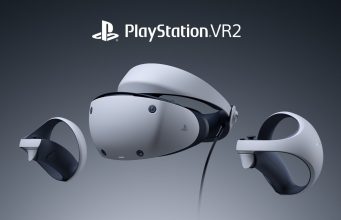Update: Sony Refutes Report That It Cut PSVR 2 Production Forecast
Following a Bloomberg report which claimed Sony had cut its production forecast for PSVR 2, the company flatly refuted the claim.
Update (January 31st, 2023 – 12: 51PM PT): Sony refuted a Bloomberg report earlier today that claimed the company had cut its production forecast for PSVR 2 in lieu of lower than expected pre-orders. Speaking to GamesIndustry.biz, the company said it has “not cut PlayStation VR2 production numbers,” and further claimed it is “seeing enthusiasm from PlayStation fans for the upcoming launch, which includes more than 30 titles such as Gran Turismo 7, Horizon Call of the Mountain, and Resident Evil Village.”
The original article, detailing the Bloomberg report, continues below.
Original Article (January 31st, 2023 – 5: 31AM PT): Slated to launch on February 22nd, Sony was expected to produce an initial run of two million PSVR 2 headsets, however a recent Bloomberg report maintains the company has reduced those forecasts to just one million in the first quarter.
Citing people familiar with deliberations, Sony reportedly told a supply partner to expect reduced display panel orders, allegedly stating that it only expects to sell 1.5 million units between April 2023 and March 2024.
Only Aiming to Meet PSVR (2016) Unit Sales?
To put it into perspective, the original PSVR for PS4 sold two million units after about 14 months on store shelves. At the time of PSVR’s launch in October 2016, over 70 million PS4s were in the wild, making for a pretty large potential install base.
Out of the gate, PS5 unit sales were largely held back by the global manufacturing cooldown starting in 2020, so many of those console sales are probably fairly recent. At CES 2023 earlier this month, Sony said it has sold 30 million PS5 consoles to date, noting at the time that December 2022 was the biggest month ever for PS5 console sales.
Here’s a chart of PSVR unit sales spanning launch up to 2020, showing an early bump to one million sales, and a slower protracted growth period to five million units over the course of three years.

Although less than half as many PS5 consoles are in the wild in comparison to PS4, the VR landscape has changed a great deal over the years. Market leader Meta hasn’t released Quest 2 sales figures, however analysts suggest Meta has shipped somewhere between 10 and 15 million Quest 2 units since launch in late 2020, meaning potential interest in VR is at an all-time high.
Provided the reports are true, Sony is only hoping to essentially match its original sales figures of PSVR over the next 14 months, which may signal it has markedly lower expectations for its next-gen VR headset overall. But why? In the end, it probably comes down to the all-in price of PSVR 2 and the lack of strong anchor titles to convert PS5 owners.

At its cheapest, PS5 costs $500, while PSVR 2 (and included controllers) costs $550, putting the all-in price of just the hardware at $1,050. This is undoubtedly a barrier to entry for newcomers, especially since the company’s best PS5 sales period was just a month ago. Brand new PS5 owners may not be able to rationalize another large gaming expense, especially in face of a worsening economic recession.
Then there are launch titles, many of which are remastered versions of extant Quest and PC VR games. Of the 30+ PSVR 2 launch day games announced by Sony, there are really only a handful of standout anchor titles: Horizon Call of the Mountain, Gran Turismo 7, and Resident Evil Village—the last two are flatscreen games getting VR compatibly support at PSVR 2’s February 22nd launch.
Notably missing is the slew of innovative first-party, ground-up VR games like Astro Bot Rescue Mission and Blood & Truth, as well as taster packs like PSVR Worlds. The lack of heavy investment in exclusive content out of the gate may signal Sony is again forecasting long term growth similar to the original PSVR, casting it more as an optional accessory than a must-have expansion of its console gaming experience.
Granted, Sony has to think more in the long-term for its VR headsets than, say, standalone manufacturers like Meta, HTC, and Pico Interactive. Sony likely doesn’t expect to ship a prospective PlayStation 6 until 2028, recent reports contend, which means this is possibly the only PlayStation-compatible VR headset we’ll see for quite some time.
For now, at least, PSVR 2 represents class-leading hardware, but it will only be able to attract and retain users in the long-term with an increased focus on exclusive content, better bundling strategies, and a PS5 install base that will hopefully continue its path towards strong growth like we’ve seen in the recent months.
Update: Sony Refutes Report That It Cut PSVR 2 Production Forecast Read More »
